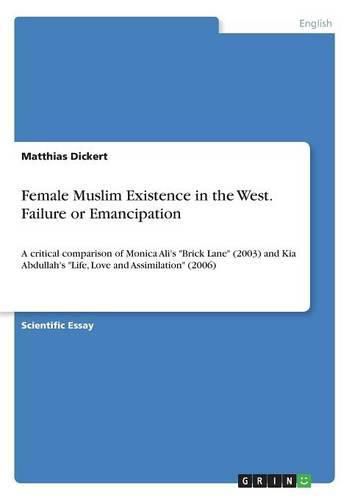Scientific Essay from the year 2016 in the subject English Language and Literature Studies - Literature, language: English, abstract: Monica Ali’s novel Brick Lane published in 2003 marked her literary breakthrough as a female Muslim writer of the second generation. She, like many of her male predecessors such as Hanif Kureishi or Salman Rushdie, chose London as the literary region to reflect matters like migration, immigration, assimilation, cultural and religious backgrounds which she linked to classical matters of female writing such as emancipation. One of the results from this was not only an insight into the Bengali community of the Tower Hamlets or the role of Muslim women in general but a double vision of (Muslim and Western) life in Great Britain. The choice to focus on the Greater London Area also helped to concentrate on the new approach by Muslim writers of the second generation to work with the former notion of the ‘postcolonial city’ in a new way while presenting London as a multicultural place. This decision at present is accompanied by the second choice of these writers to also include former British colonies in order to better reflect the double background of their main characters. Kia Abdullah - like Ali - also stems from the large Bengali community of the Tower Hamlets in London and it was no surprise that the presentation of her main female character Kieran Ali also provoked criticism and protest from her own community. Her novel Life, Love and Assimilation (2006) must, however, be seen as the more provocative novel since her main character chooses and lives emancipation in a more radical way. This option is simply possible because Kieran - unlike Nazneen, the main character of Brick Lane - belongs to the generation of Muslim girls and teenagers who were born and raised in Great Britain. Both books can therefore be linked in the sense that they seem to start a discussion of female Muslim emancipation of immigrants (Nazneen) and girl





